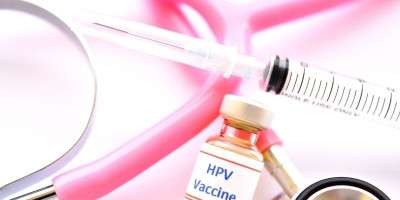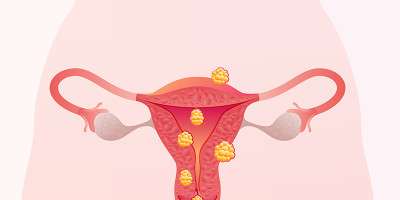Cervical cancer is the second most common cancer in women worldwide after breast cancer. It is a preventable cancer, which is why regular screenings are essential, and attention should be paid to certain symptoms.
If we observe a lesion on the cervix, in the vagina, or vulva, a direct biopsy is recommended for diagnosis. For detecting abnormal cells that do not yet present symptoms, or are invisible to the eye, but could potentially lead to cervical cancer, we use PAP Smear and HPV screening tests. These screening tests are commonly known as cervical cancer tests. For patients with suspicious results in screening tests, we recommend diagnostic tests such as colposcopy and biopsy.
How Are Smear and HPV (Human Papilloma Virus) Tests Conducted?
While the woman lies on the gynecological exam table in a gynecological position, the cervix is viewed through a speculum, a special tool used to open the vagina. Using small, single-use, brush-like instruments, a sample is taken from the cervix. As in a Pap smear test, the samples can either be spread on a slide or placed in a liquid medium.
At our clinic, we prefer to use the liquid-based smear test.
The HPV test is collected in the same way as the smear test. While samples in a Pap smear are fixed with alcohol, liquid-based smears are placed in a special liquid solution and then sent to pathology for examination.
The Pap smear test checks for abnormal cells. The HPV test, however, does not look for cell changes in the cervix but checks whether the cells are infected with HPV. For example, if an HPV test is positive but the Pap smear is negative, close monitoring is recommended.
We do not recommend HPV screening tests for those under 30 years old, especially those under 25, as HPV infections in young women largely resolve on their own within two years.
What Are Our Recommendations for Cervical Cancer Screening Tests Based on Age, and How Often Should You Get Screened?
When should a Pap smear test be done? When should an HPV test be done?
The ACS (American Cancer Society) recommends starting screening at age 25 with an HPV test and continuing with an HPV test every five years until age 65. However, co-testing (HPV and Pap test together) every five years or a Pap smear alone every three years is also acceptable. If regular HPV tests remain negative, screening can be discontinued at age 65.
This screening schedule may not always apply, as more frequent screenings may be necessary in some cases, such as for HIV-positive patients, those with weakened immune systems, or patients with a previous abnormal biopsy result.
Should Screening Tests Continue for Women Who Have Had Their Uterus and Cervix Removed?
If there was no pre-cancerous (potentially cancerous) lesion in the cervix before surgery, screening tests are generally not required post-surgery.
What Should Be Avoided Before Pap and HPV Tests?
It is recommended to avoid sexual intercourse, vaginal gels, tampons, menstruation, and vaginal douching for two days prior to the test.
Frequently Asked Questions Before Pap / HPV Testing
- Which tests will I undergo?
- What is the purpose of the screening tests?
- How will the examination be conducted?
- Will the Pap smear or HPV test hurt?
- How often should the Pap smear test be done?
Questions Your Doctor May Ask Before Taking a Pap/HPV Sample
- When was your last menstrual period?
- When did you last have a screening test?
- Have you ever had an abnormal test result and received treatment for it?
- Do you have any known medical conditions?
Frequently Asked Questions After the Examination
- When and how will I receive my results?
- What should I do after receiving my results?
How Long Does It Take to Get a Pap Smear Test Result?
When Will the HPV Test Results Be Available?
At our clinic, HPV test results are available within 2-7 business days, with a maximum turnaround of 7 days.
How Is a Pap Smear (PAP Test, Cervical Cytology) Result Evaluated?
Interpreting a Pap smear result is crucial.
The most common concern is, "Do I have cancer?"
Changes in cervical cells caused by the HPV virus progress slowly and often resolve on their own, especially in younger people. So, panicking immediately is usually unnecessary.
Pap smear results can be classified as:
- Negative for intraepithelial lesion or malignancy (normal)
- Positive for intraepithelial lesion or malignancy (abnormal)
- Insufficient (inconclusive)
If cells cannot be evaluated due to mucus or blood, or if there are insufficient cells, the result is marked as inconclusive, indicating the need to repeat the test.
A negative smear result means that a sufficient number of cells were examined and found to be normal.
Certain infections and inflammatory conditions may also be detected on a Pap smear. In such cases, treating the infection and then repeating the test may be recommended.
A positive smear result means abnormal cells are present. Although this does not necessarily indicate cancer, it highlights the importance of taking preventive measures to halt progression toward cancer.
The Primary Cause of Abnormal Cells Is Largely Due to HPV (Human Papilloma Virus). The abnormal cells caused by HPV have been classified as ASCUS, AGC, LSIL, ASC-H, HSIL, AIS, or cervical (cervix) cancer.
- ASCUS (Atypical Squamous Cells of Undetermined Significance): This is the most common abnormal Pap test result. Some cells do not appear normal, but it’s unclear if the changes are due to HPV. Irritation, certain infections (such as Candida yeast infection), pregnancy, or hormonal changes during menopause can also cause these cells. It is not associated with cancer. An HPV test is recommended; if positive, a colposcopy is suggested.
- Atypical Glandular Cells (AGC): Some glandular cells do not appear normal, which may suggest an issue in the uterus. A colposcopy is recommended.
- Low-Grade Squamous Intraepithelial Lesion (LSIL): This shows a low-grade lesion likely due to HPV infection. A colposcopic examination is recommended.
- Atypical Squamous Cells, Cannot Exclude HSIL (ASC-H): Some abnormal squamous cells are observed, and there’s a possibility they may be HSIL. A colposcopy is recommended.
- High-Grade Squamous Intraepithelial Lesion (HSIL): Moderate to high-grade abnormal cervical cells are observed, which, if untreated, may eventually progress to cancer. A colposcopy is recommended.
- Adenocarcinoma In Situ (AIS): An advanced lesion in the glandular tissue of the cervix is observed. It is considered precancerous, with the potential to progress to cervical adenocarcinoma if untreated. A colposcopy is recommended.
- Cervical Cancer Cells (Squamous Cell Cancer, Adenocarcinoma): Sometimes cancer cells can be detected in a Pap test, although it is rare in women who undergo regular screenings.
Follow-Up for Abnormal Test Results
When evaluating abnormal test results in individuals undergoing Pap smear tests, several factors are taken into account:
- Results of prior screening tests
- Any previously identified pre-cancerous cervical changes (CIN1, CIN2, CIN3, CIS)
- Characteristics such as age
Based on these factors, recommendations may include colposcopy and biopsy, HPV testing, HPV/PAP test follow-up, or potential treatment.
For Genital Wart Treatment Costs, Pap Smear Costs, and HPV Testing Costs: Prices for Pap smear tests, HPV tests, HPV genotyping, and genital wart treatments in Istanbul vary depending on the hospital, clinic, or pathology laboratory.
For HPV Screening, Pap Smear, Colposcopy, Biopsy, LEEP, or Conization procedures in Istanbul, you can contact Associate Professor Dr. Çiğdem Yayla Abide.







